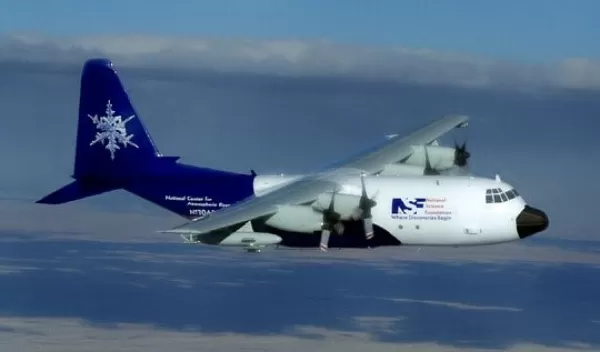
Researchers set to take to the air above the Arctic and New York City
Atmospheric scientists are embarking on two new research projects supported by the U.S. National Science Foundation that involve using sophisticated planes to understand the atmospheric chemistry and levels of pollutants in two regions: the Arctic and the metropolitan region of New York.
"These are exciting opportunities for two teams of researchers to increase our understanding of the composition and chemistry of the atmosphere -- from one of the most remote locations, the Arctic Ocean, to one of the most polluted, New York City," said Paul Shepson, dean of the School of Marine and Atmospheric Sciences at Stony Brook University.
The first project, Chemistry in the Arctic: Clouds, Halogens, and Aerosols, or CHACHA, aims to improve the understanding of atmospheric chemistry in the Arctic that impacts ozone, particulate matter, and cloud chemical composition in the context of the rapidly changing Arctic atmosphere.
Led by Shepson, the CHACHA team plans to conduct airborne measurements of halogens (derived from sea salt on the frozen ocean surface) and other chemicals as they exist in the gas phase, within particles, and in cloud droplets around the Chukchi and Beaufort Seas and the Alaska North Slope regions.
"This project will provide a unique and valuable dataset, the first of its kind, which will likely be long-lived and used by the greater research community," said Jennifer Mercer, a program director in NSF's Office of Polar Programs.
The scientists will use two aircraft: the University of Wyoming King Air, and the Purdue University Airborne Laboratory for Atmospheric Research.
"This will be the first time anyone has carried out extensive airborne measurements of halogen gases, particles, and cloud droplets in the Arctic," said Shepson. "The process and results will be a substantial step forward in our understanding of how the atmosphere cleans itself in polar regions, including in the vicinity of the Arctic Ocean along Alaska's coastline."
The second project is the Greater New York Oxidant, Trace gas, Halogen, and Aerosol Airborne Mission, or GOTHAAM.
Led by Stony Brook University's John Mak, co-principal investigators at Stony Brook and six other universities around the country will use NSF's C-130 aircraft to assess air quality, chemistry and pollutants in one of the most densely populated regions of the country.
"The research will provide new insights into the processes that control harmful ozone and particulate matter pollution in a complex urban environment," said Anne Johansen, a program director in NSF's Division of Atmospheric and Geospace Sciences. "It will generate results with implications for air quality in the New York City region and near other coastal mega-cities."
The greater New York City region, home to 20 million inhabitants, has a chemically diverse and complex atmosphere due to urban emissions and emissions from coastal waters and inland forests. When the air is sunlit, the result is a complex "soup" of reactive gases and aerosols and their products, some of which are toxic to humans, especially to the human respiratory system.


